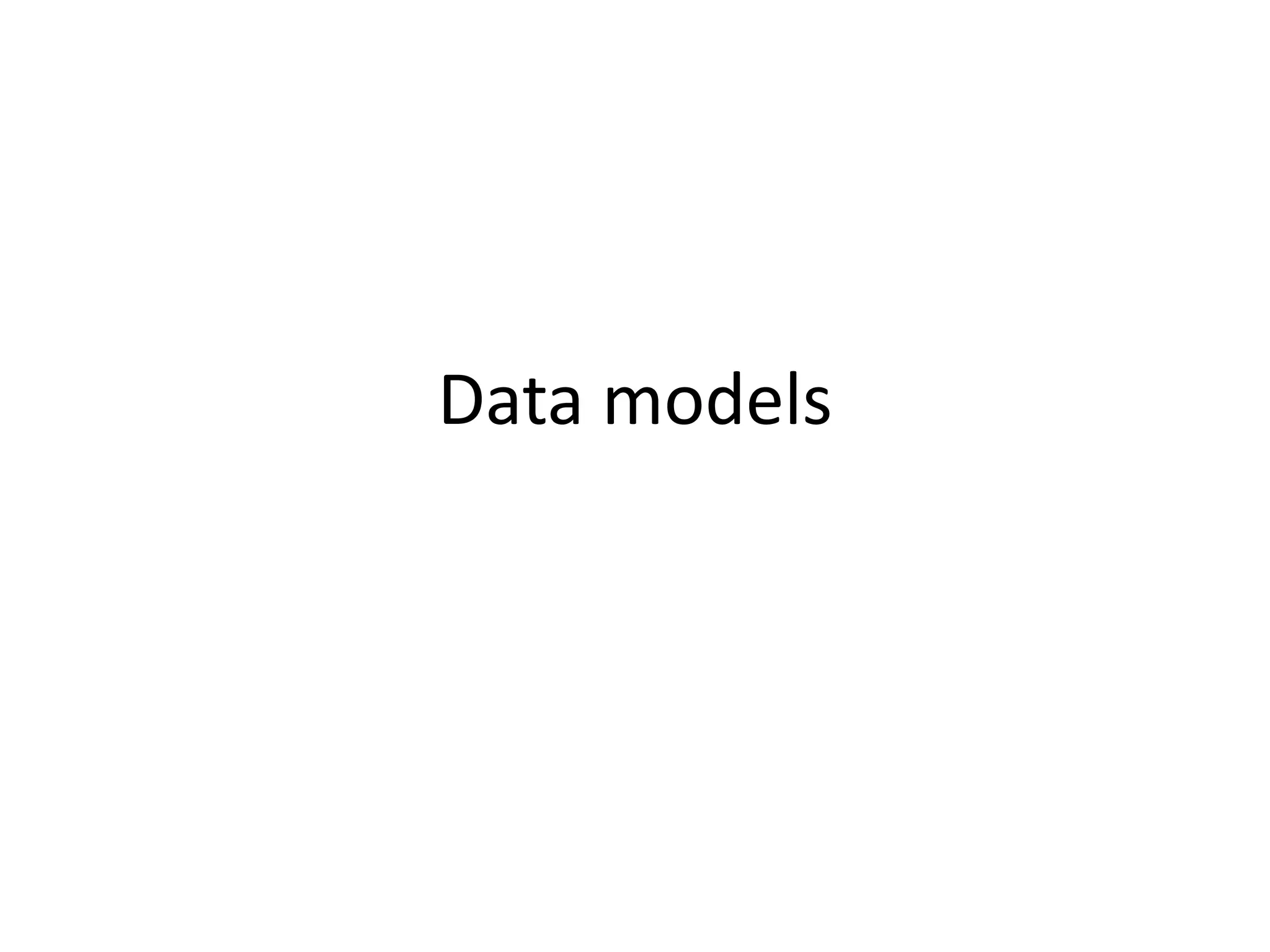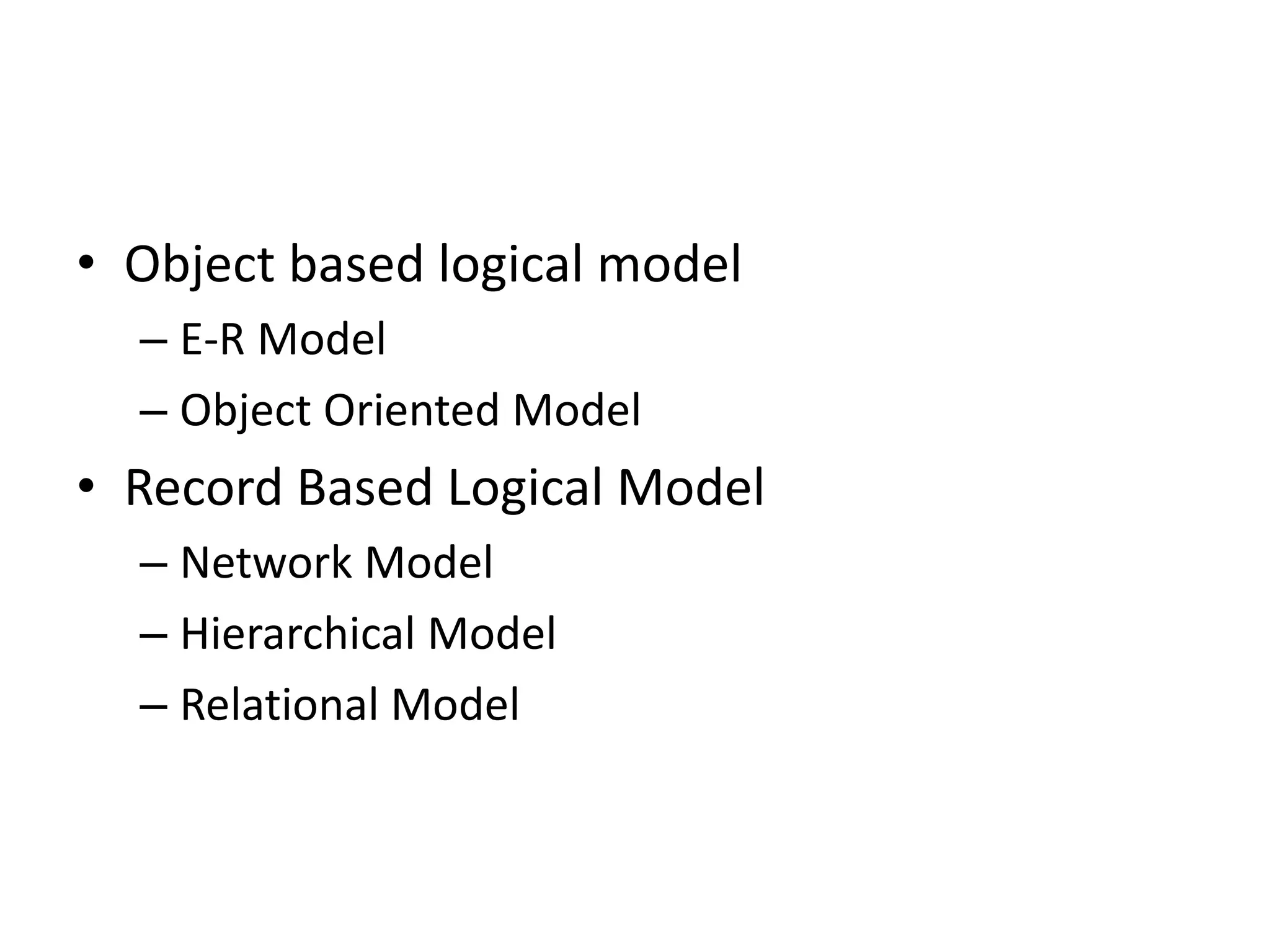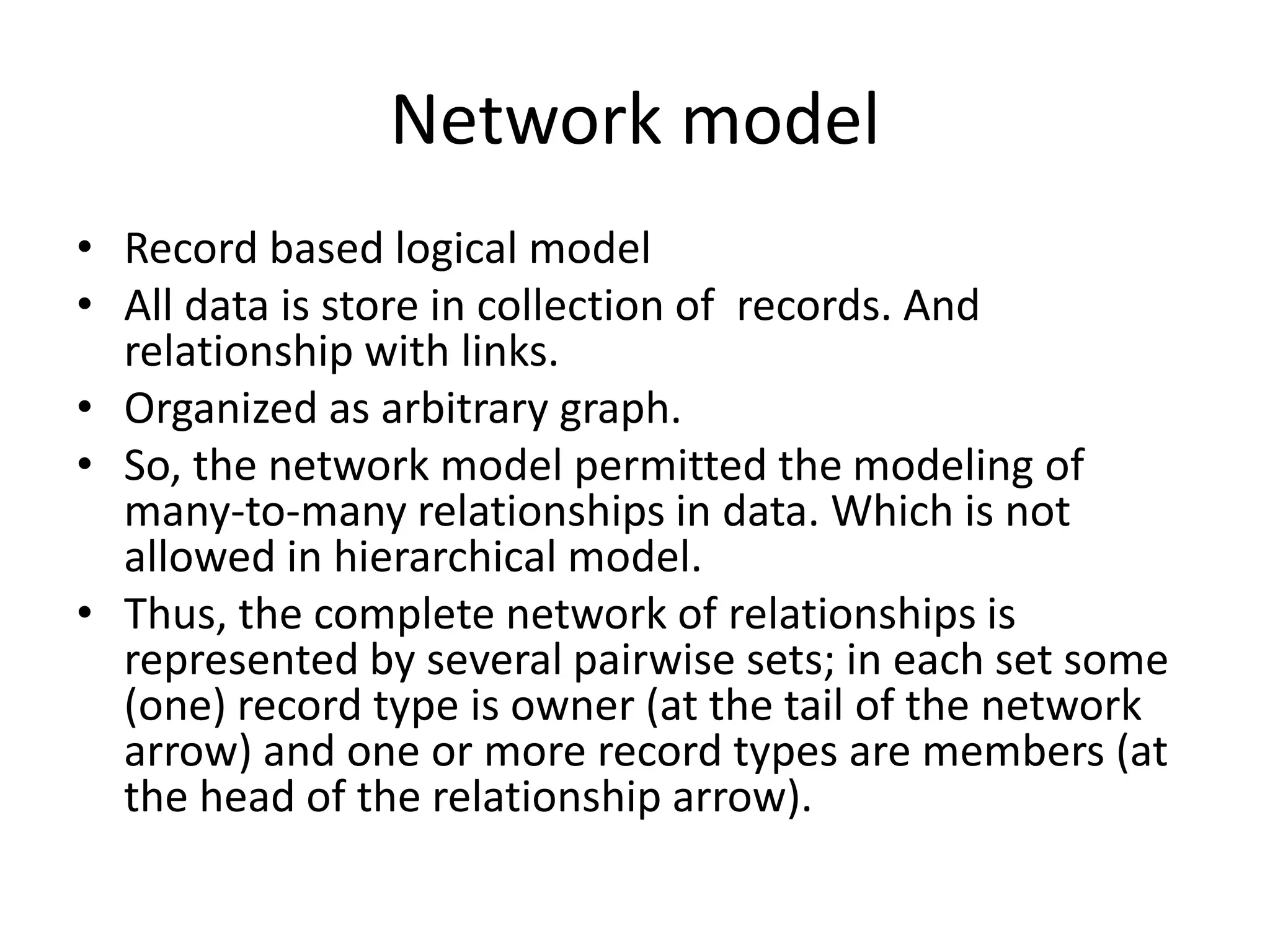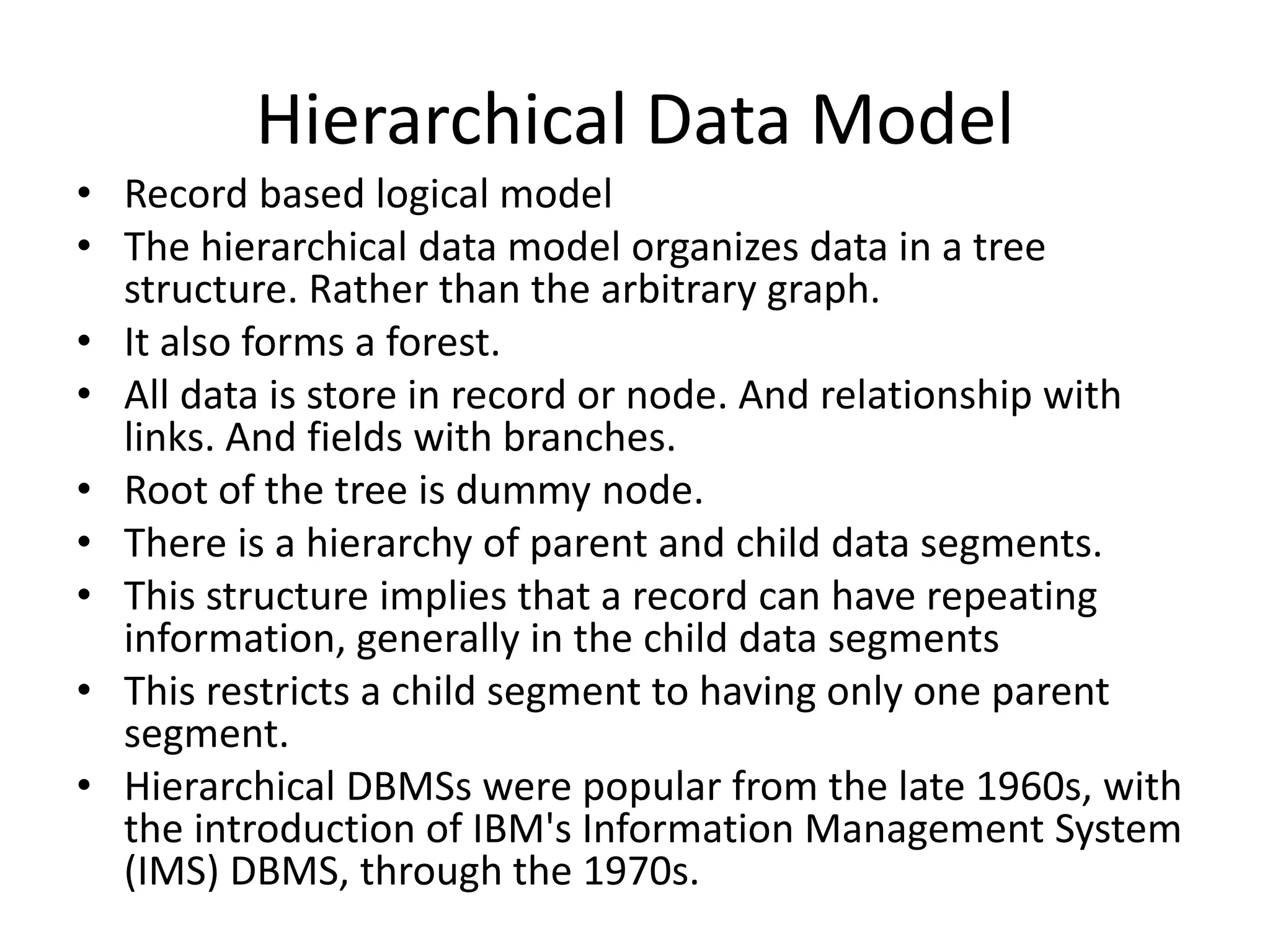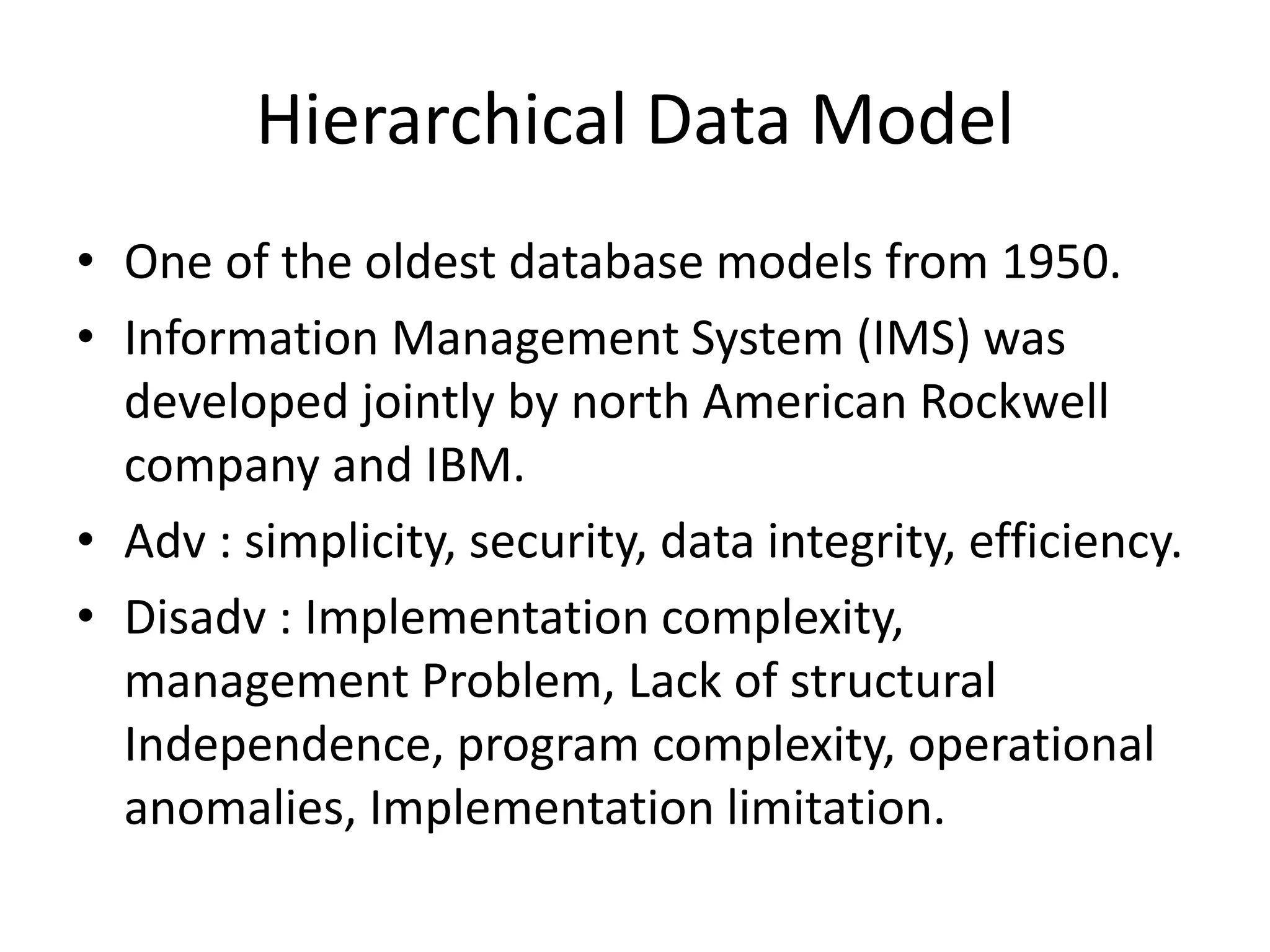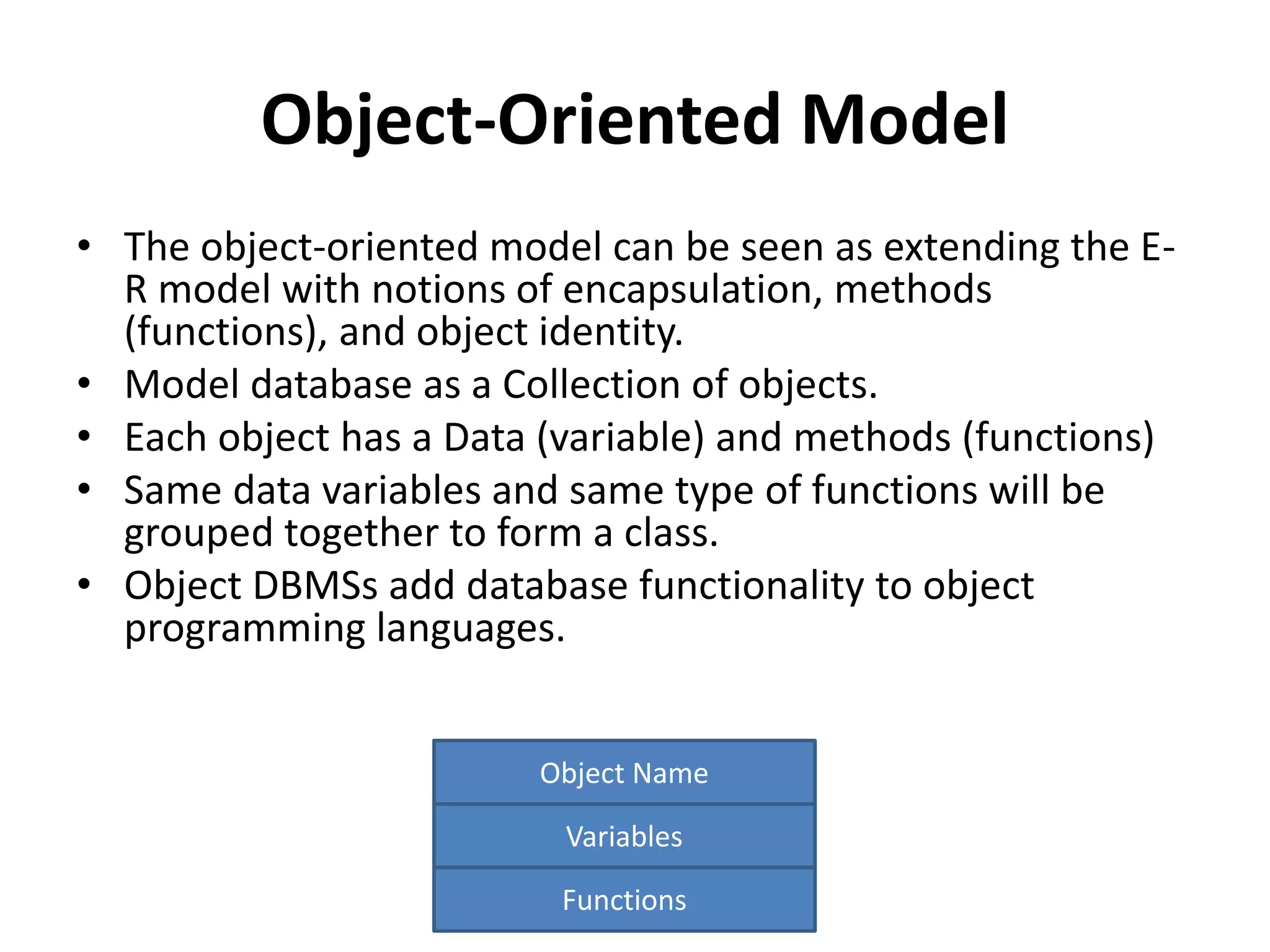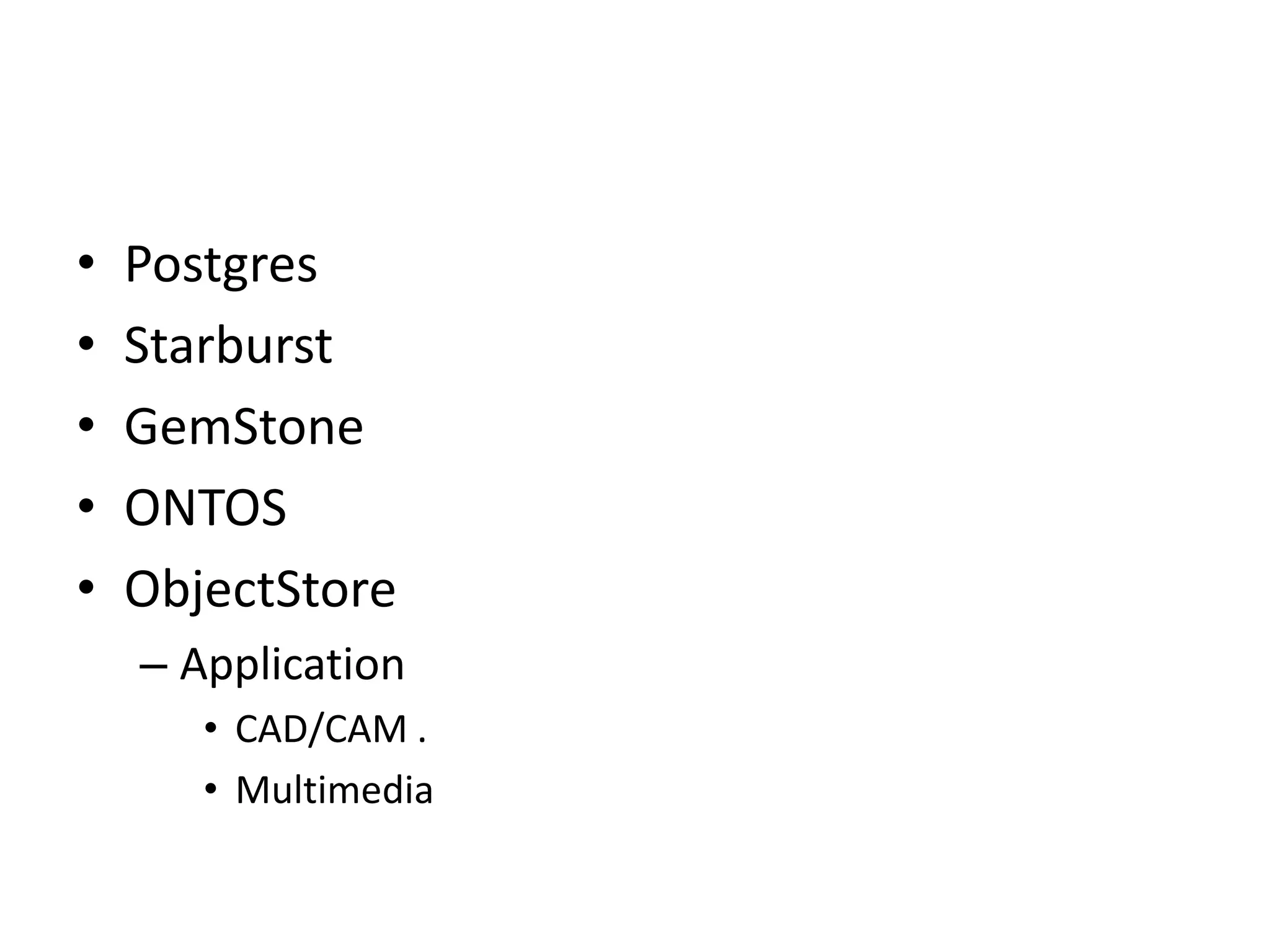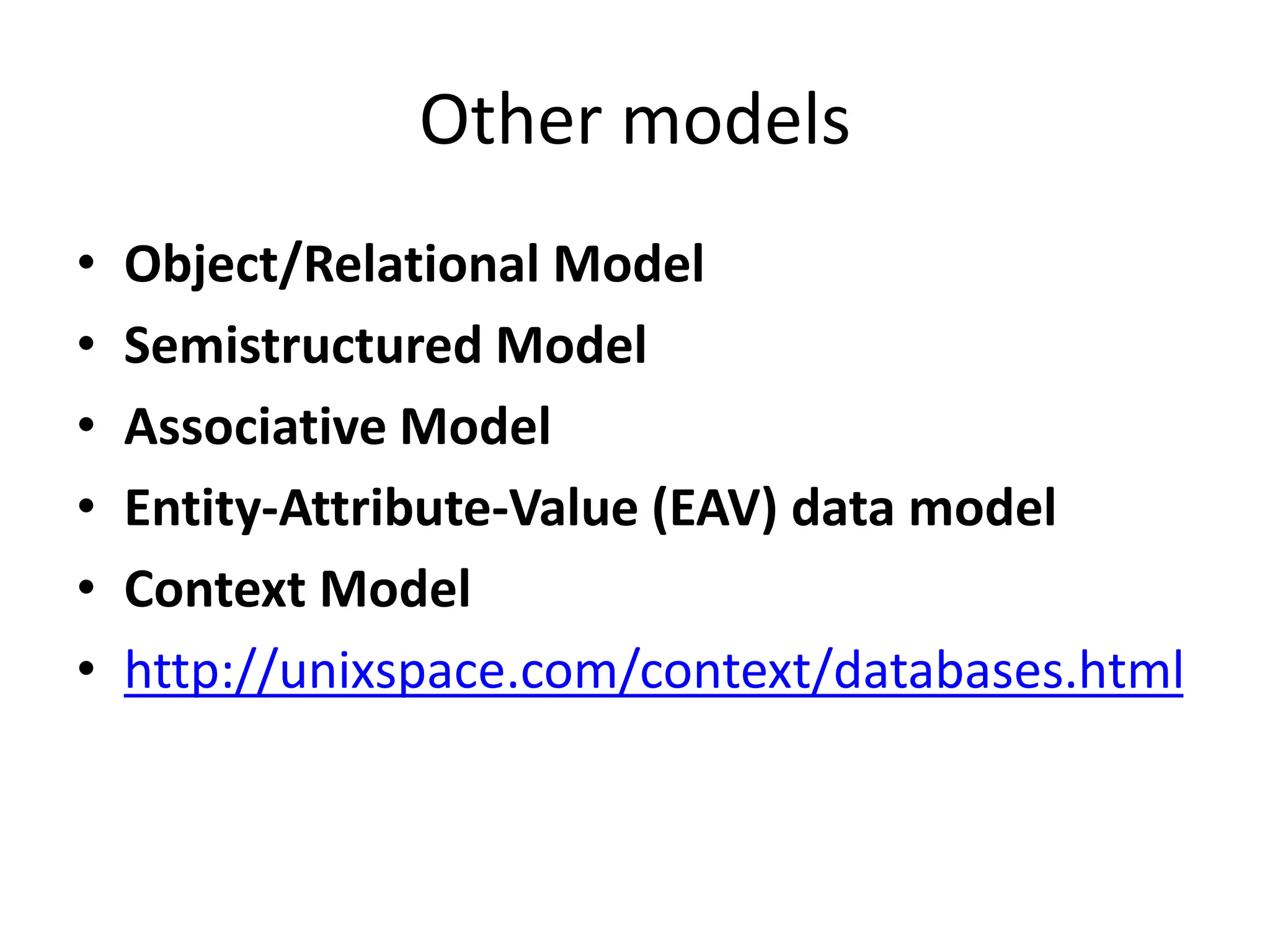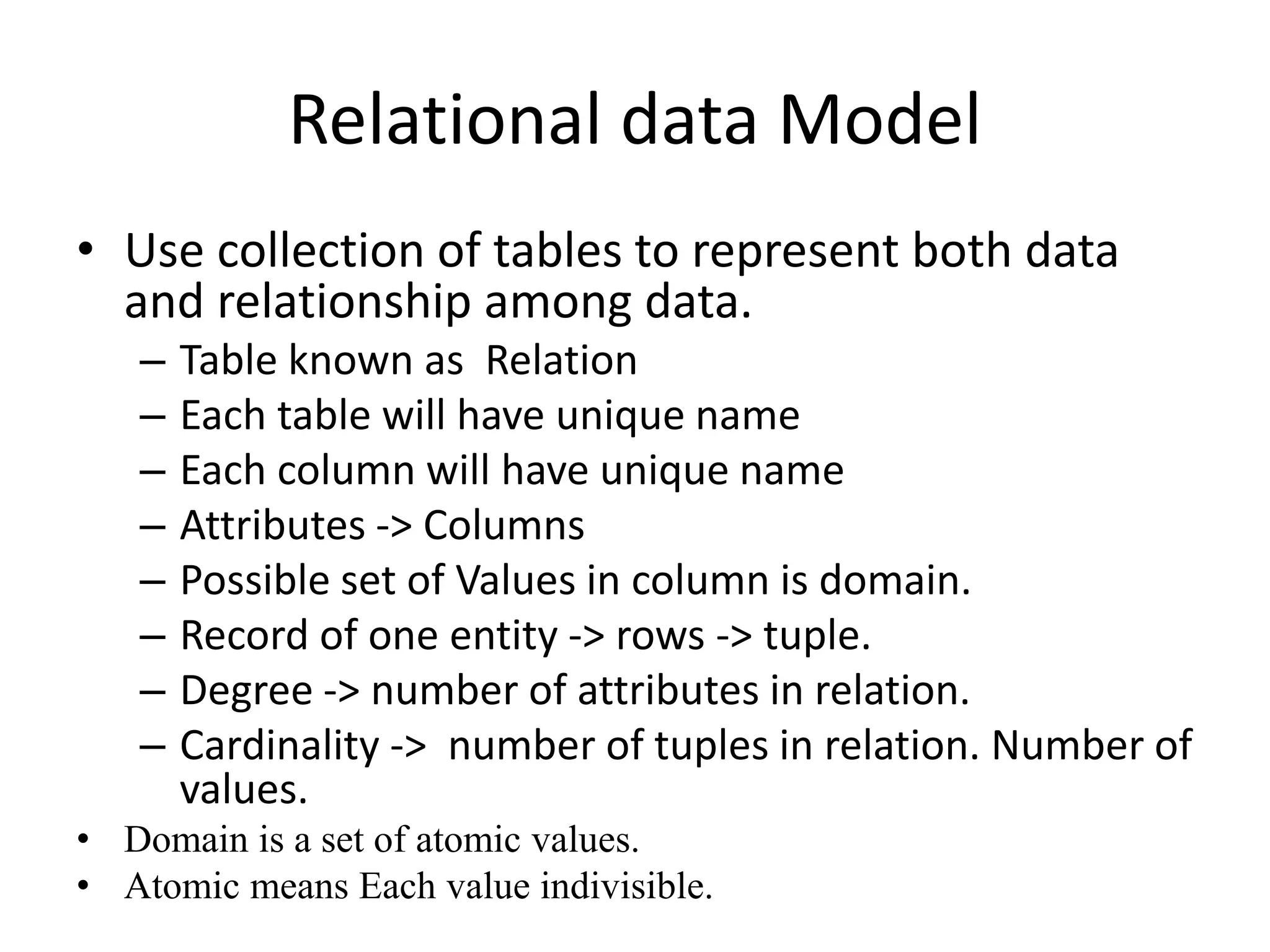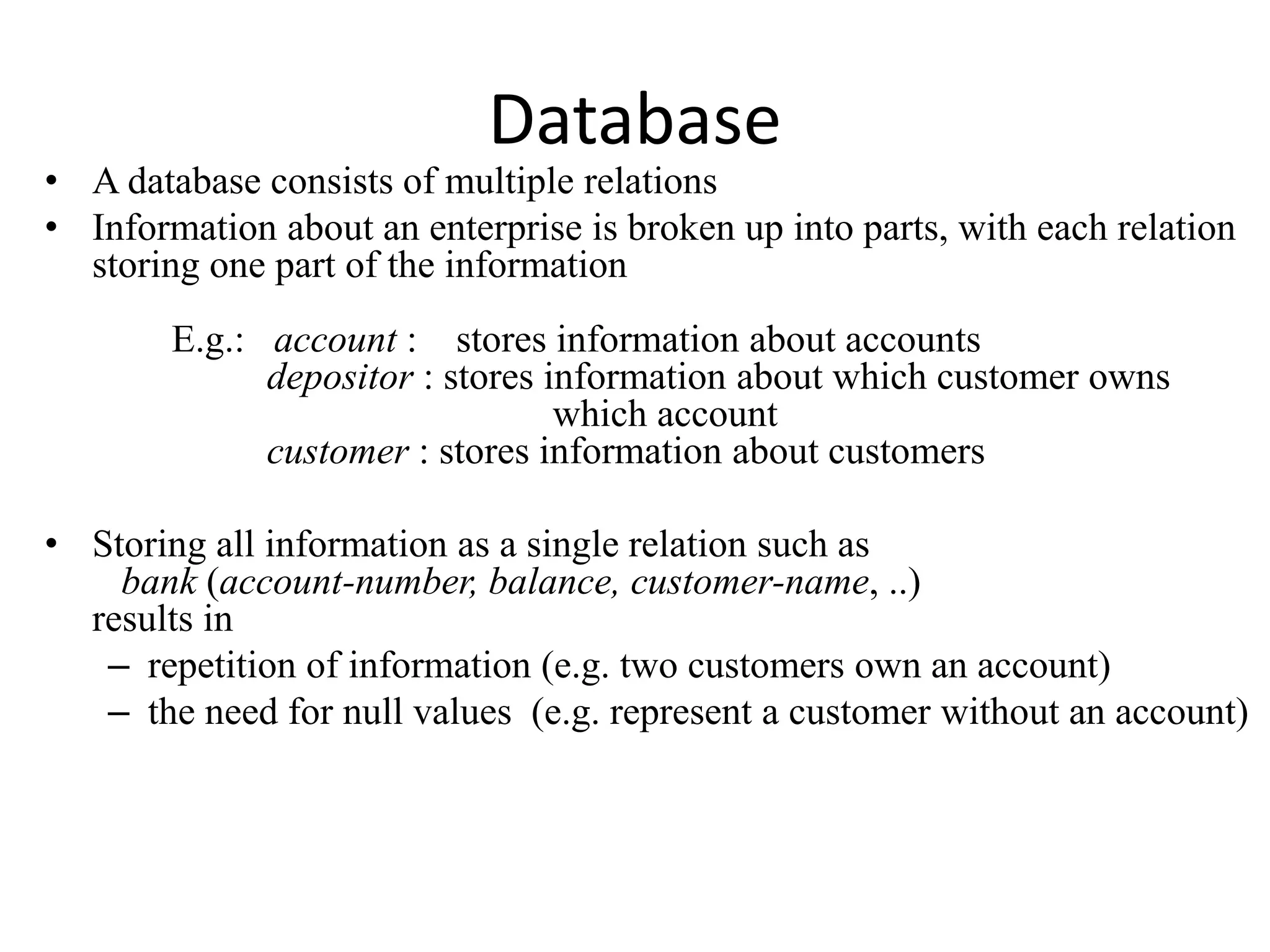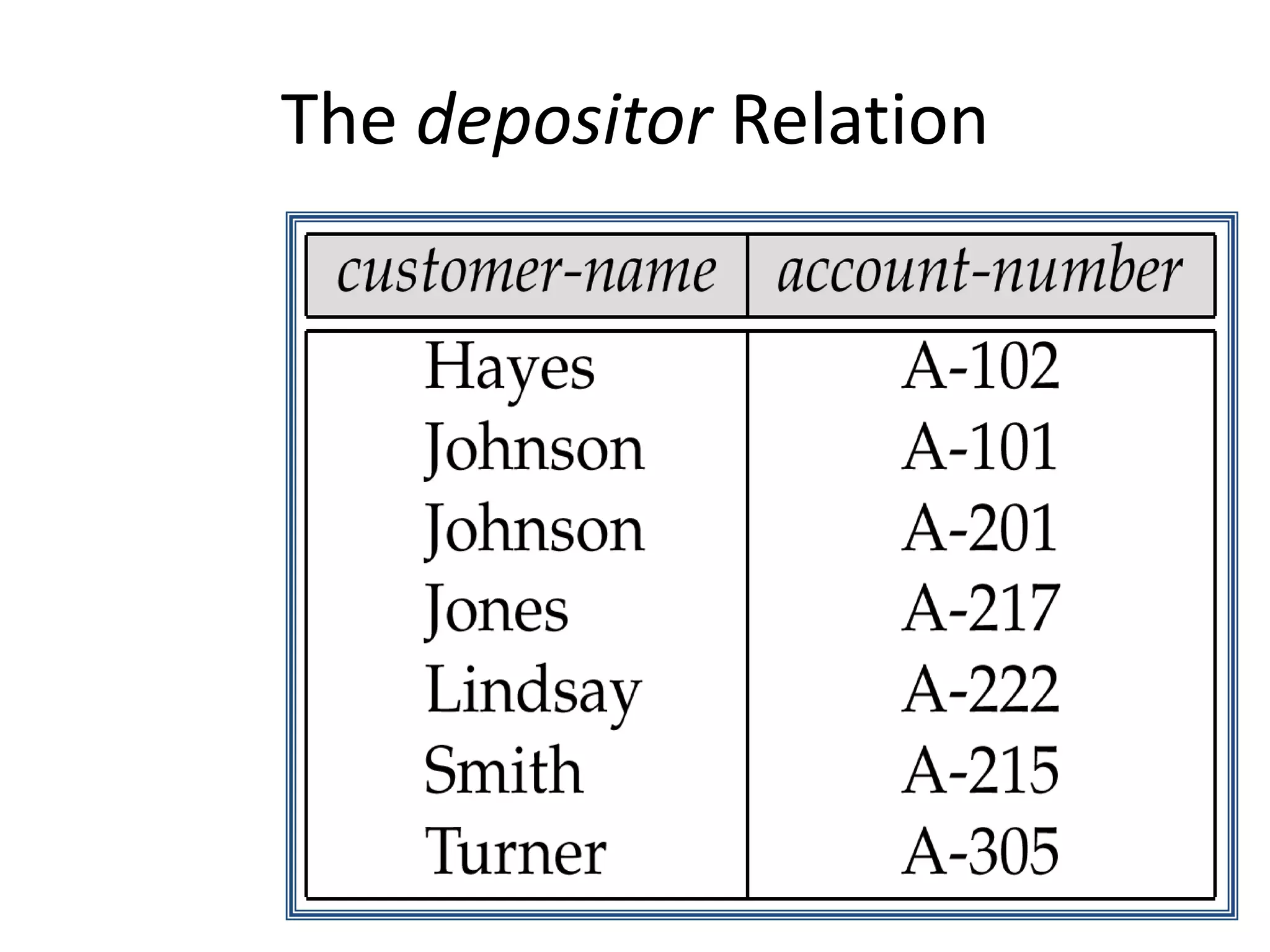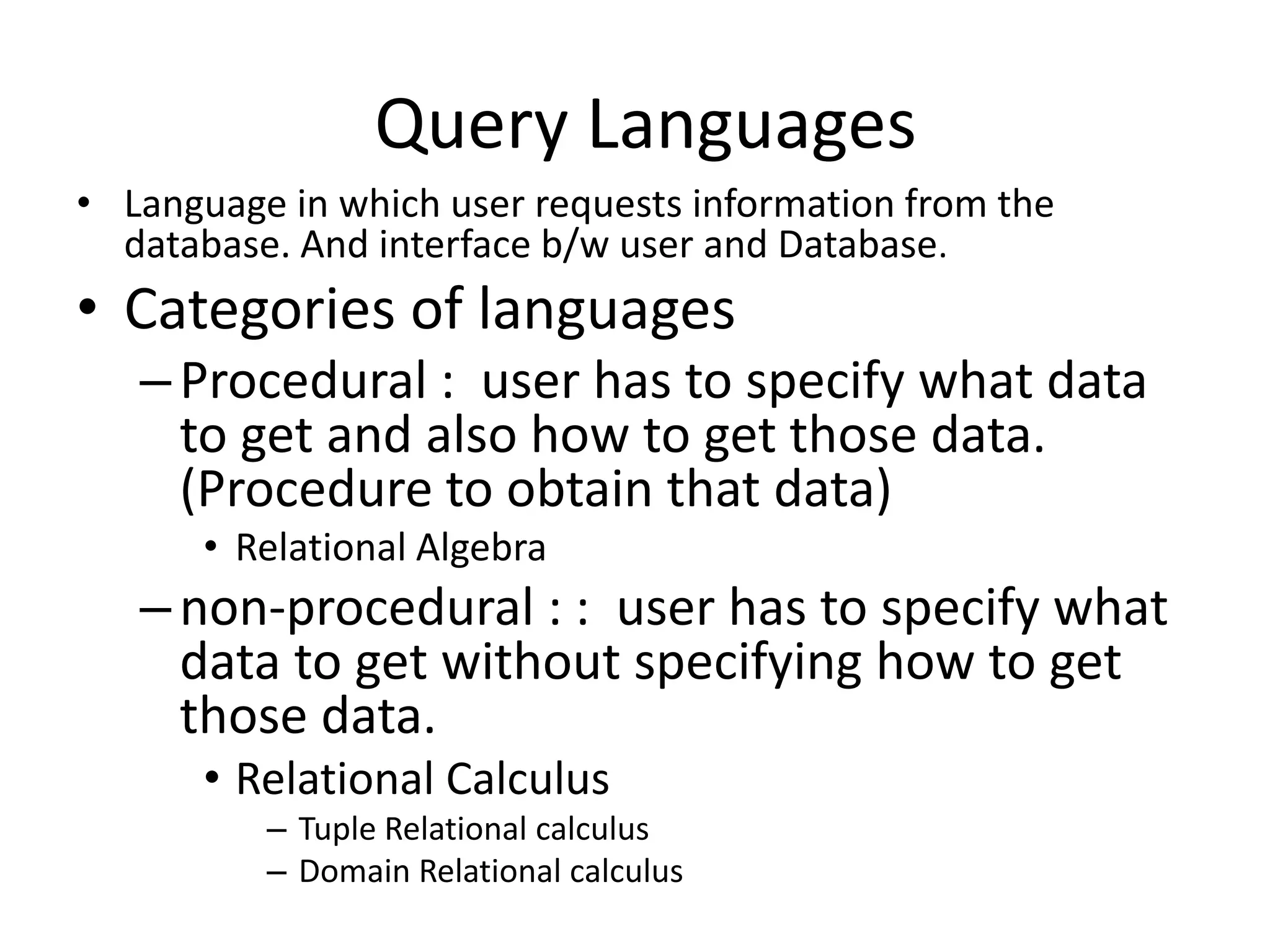The document discusses various data models used in database management systems (DBMS), including object-based, record-based logical models, and their specific types like relational, hierarchical, and network models. It highlights the advantages and disadvantages of each model, explaining concepts such as relationships, integrity rules, and keys, particularly focusing on the relational model developed by E.F. Codd. Additionally, it touches upon query languages used to interact with databases, distinguishing between procedural and non-procedural types.
